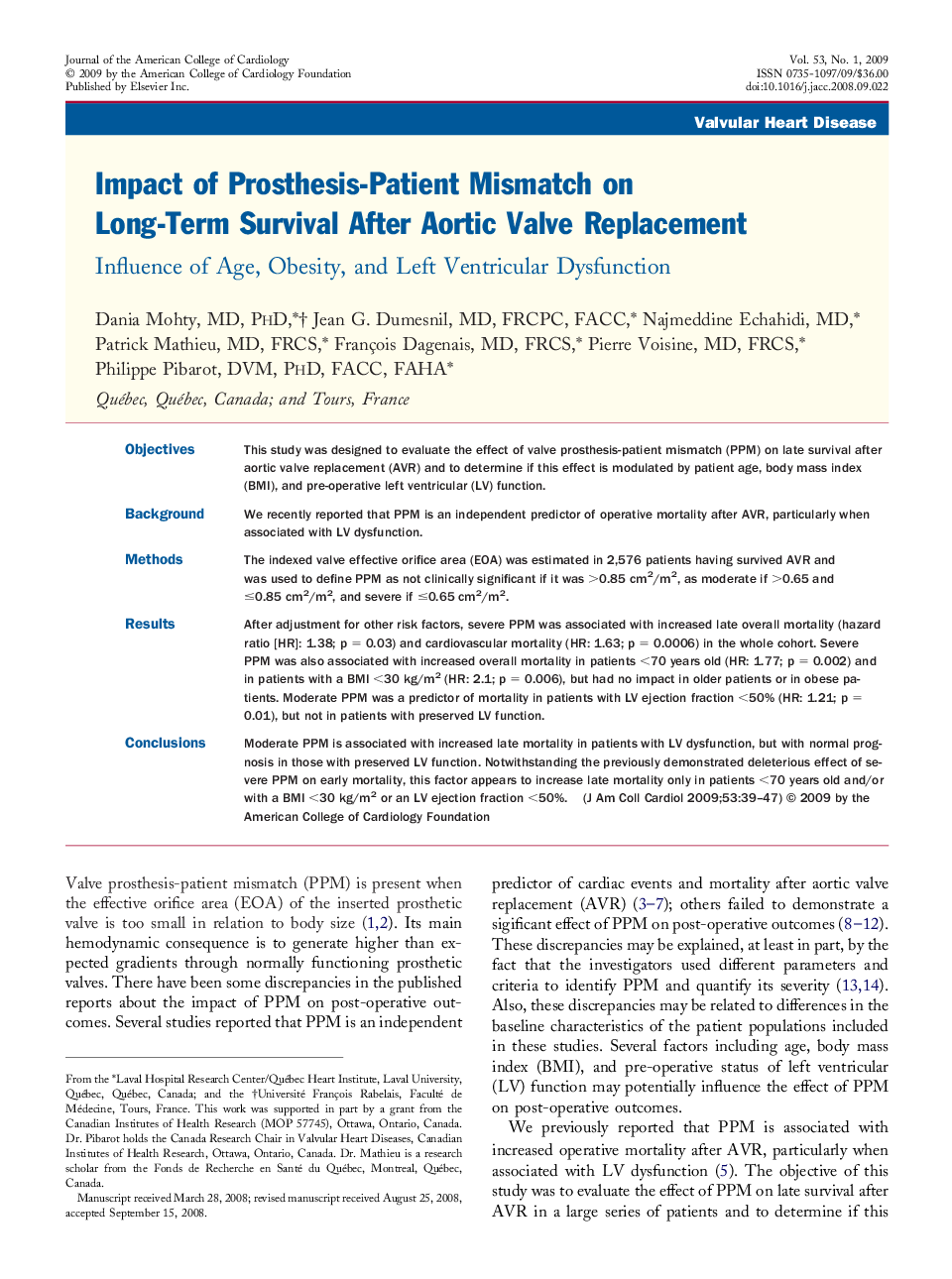| Article ID | Journal | Published Year | Pages | File Type |
|---|---|---|---|---|
| 2951728 | Journal of the American College of Cardiology | 2009 | 9 Pages |
ObjectivesThis study was designed to evaluate the effect of valve prosthesis-patient mismatch (PPM) on late survival after aortic valve replacement (AVR) and to determine if this effect is modulated by patient age, body mass index (BMI), and pre-operative left ventricular (LV) function.BackgroundWe recently reported that PPM is an independent predictor of operative mortality after AVR, particularly when associated with LV dysfunction.MethodsThe indexed valve effective orifice area (EOA) was estimated in 2,576 patients having survived AVR and was used to define PPM as not clinically significant if it was >0.85 cm2/m2, as moderate if >0.65 and ≤0.85 cm2/m2, and severe if ≤0.65 cm2/m2.ResultsAfter adjustment for other risk factors, severe PPM was associated with increased late overall mortality (hazard ratio [HR]: 1.38; p = 0.03) and cardiovascular mortality (HR: 1.63; p = 0.0006) in the whole cohort. Severe PPM was also associated with increased overall mortality in patients <70 years old (HR: 1.77; p = 0.002) and in patients with a BMI <30 kg/m2 (HR: 2.1; p = 0.006), but had no impact in older patients or in obese patients. Moderate PPM was a predictor of mortality in patients with LV ejection fraction <50% (HR: 1.21; p = 0.01), but not in patients with preserved LV function.ConclusionsModerate PPM is associated with increased late mortality in patients with LV dysfunction, but with normal prognosis in those with preserved LV function. Notwithstanding the previously demonstrated deleterious effect of severe PPM on early mortality, this factor appears to increase late mortality only in patients <70 years old and/or with a BMI <30 kg/m2 or an LV ejection fraction <50%.
